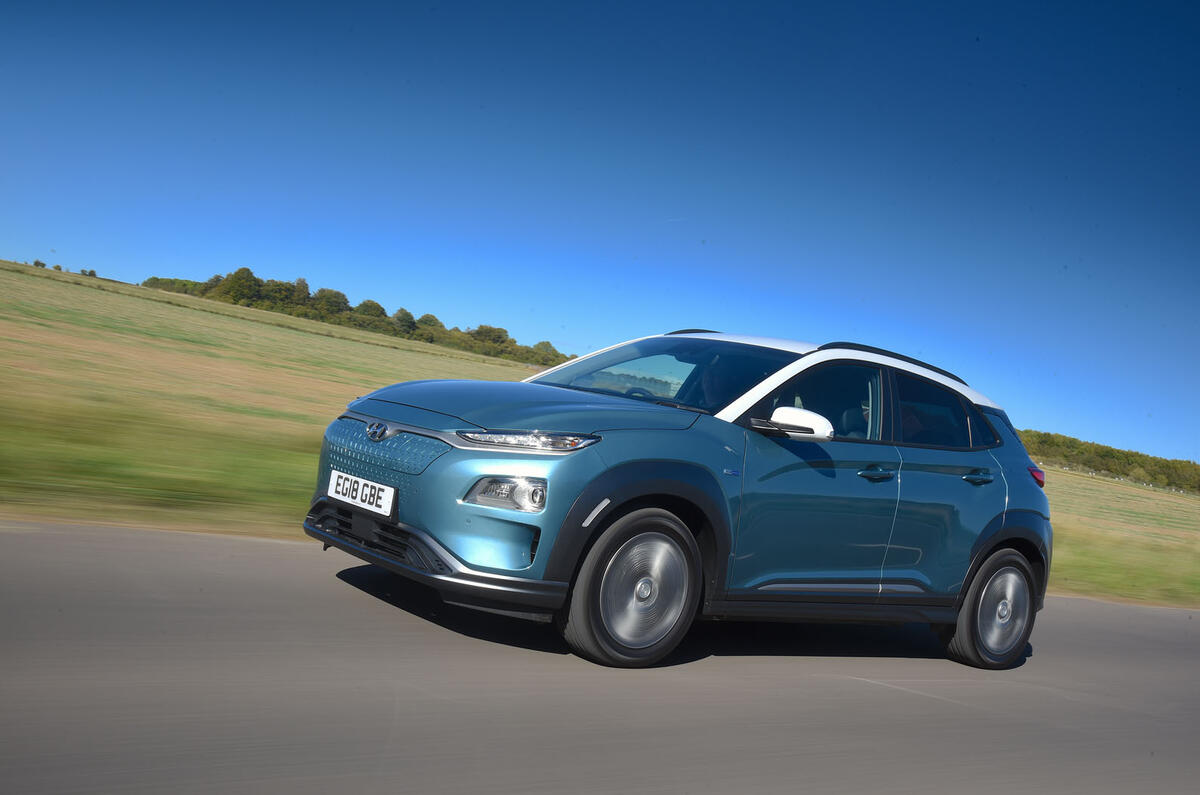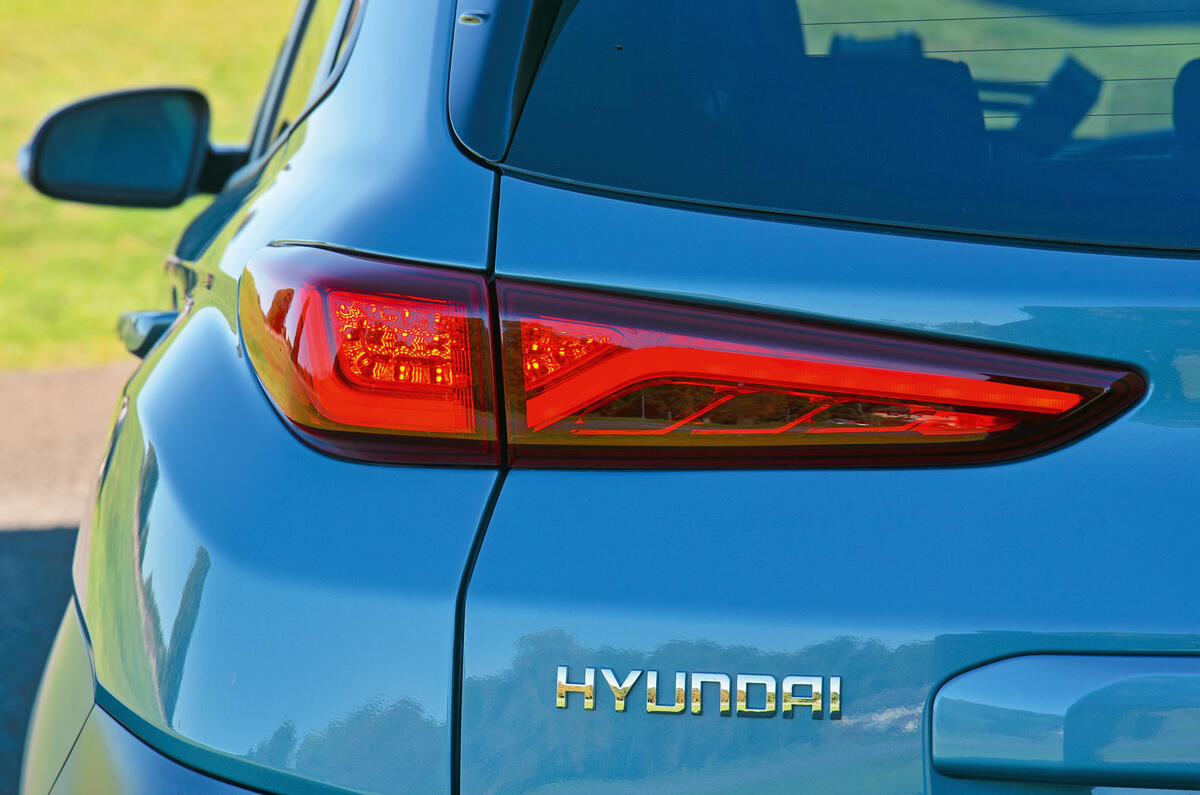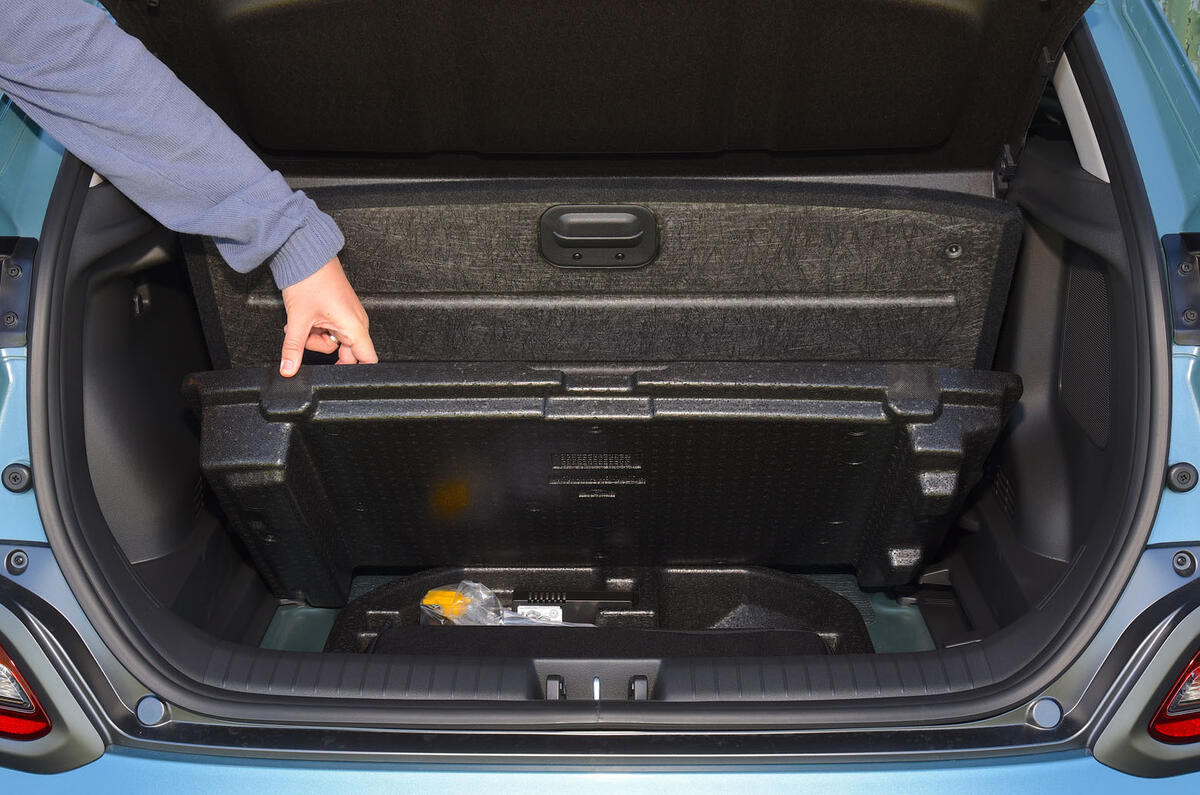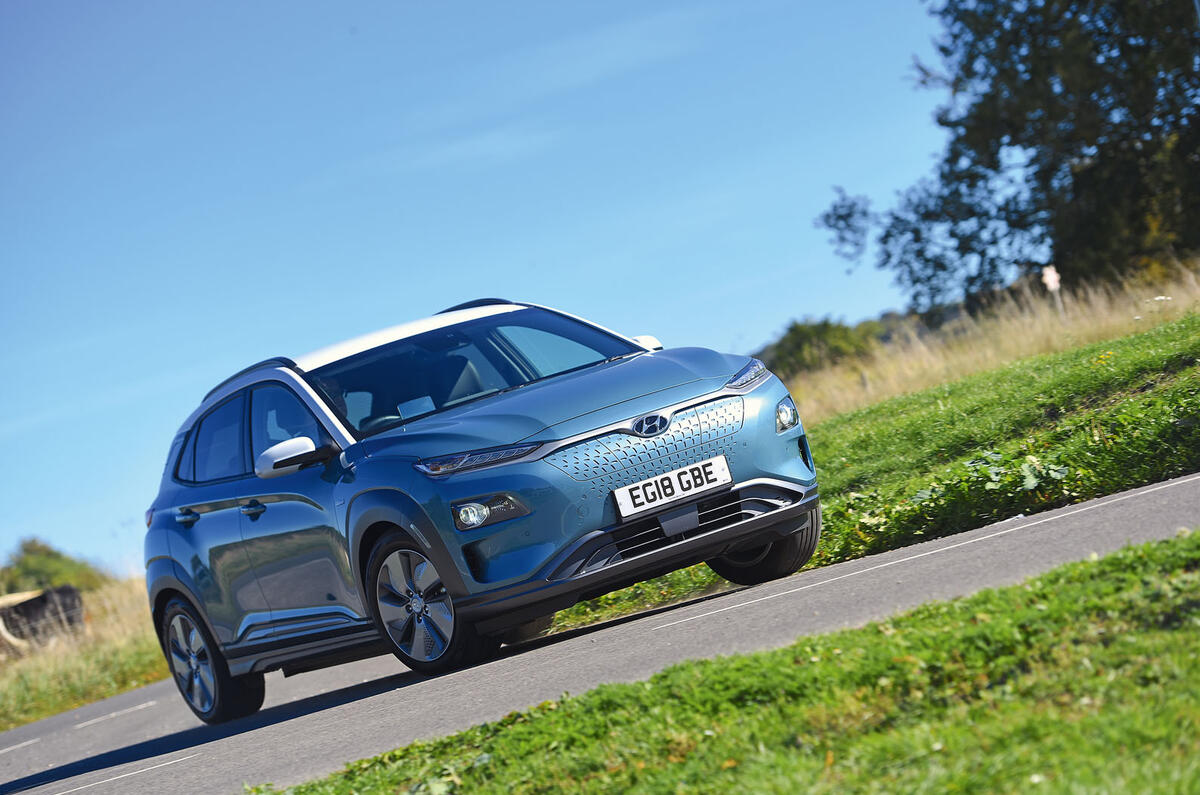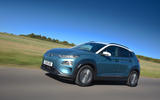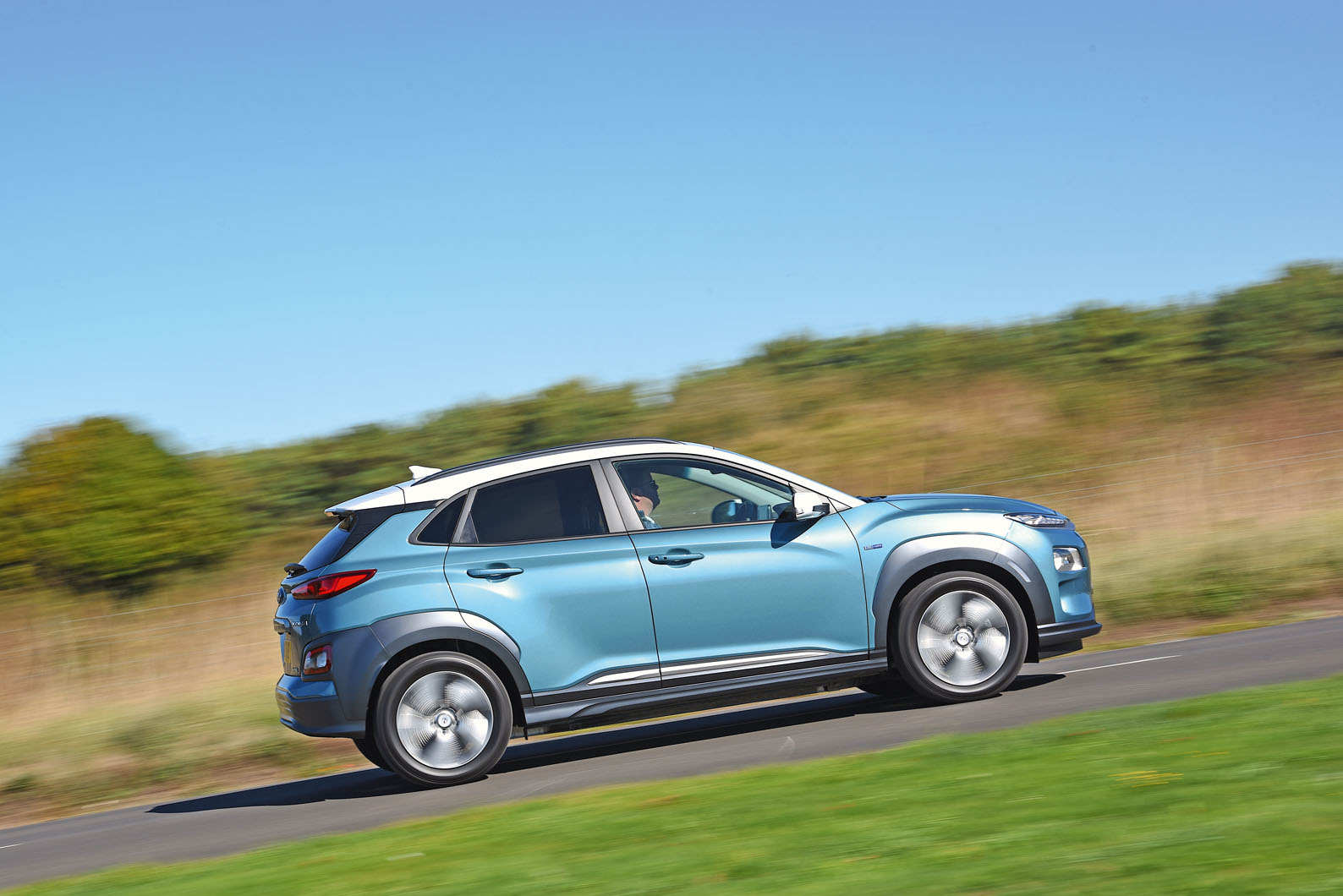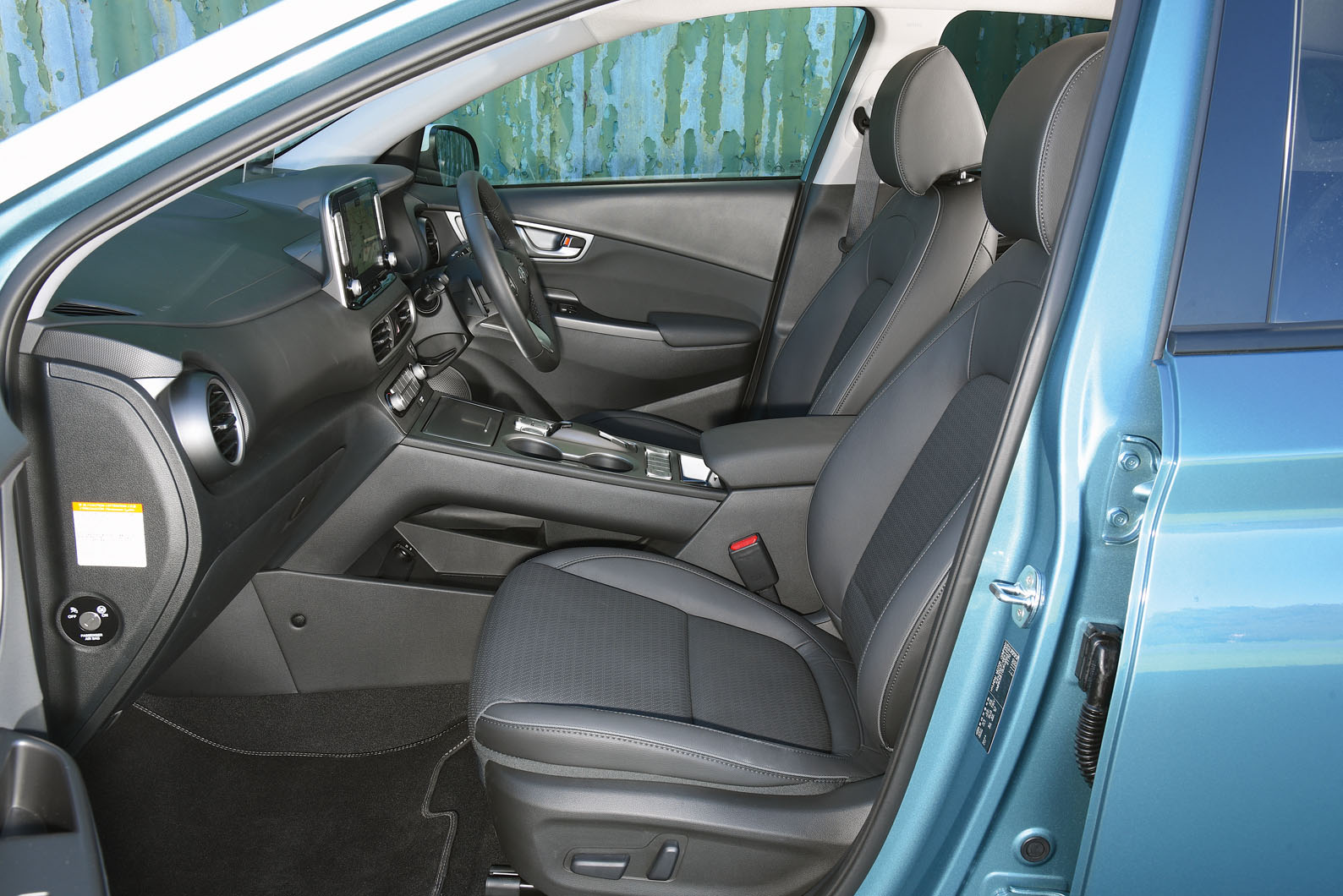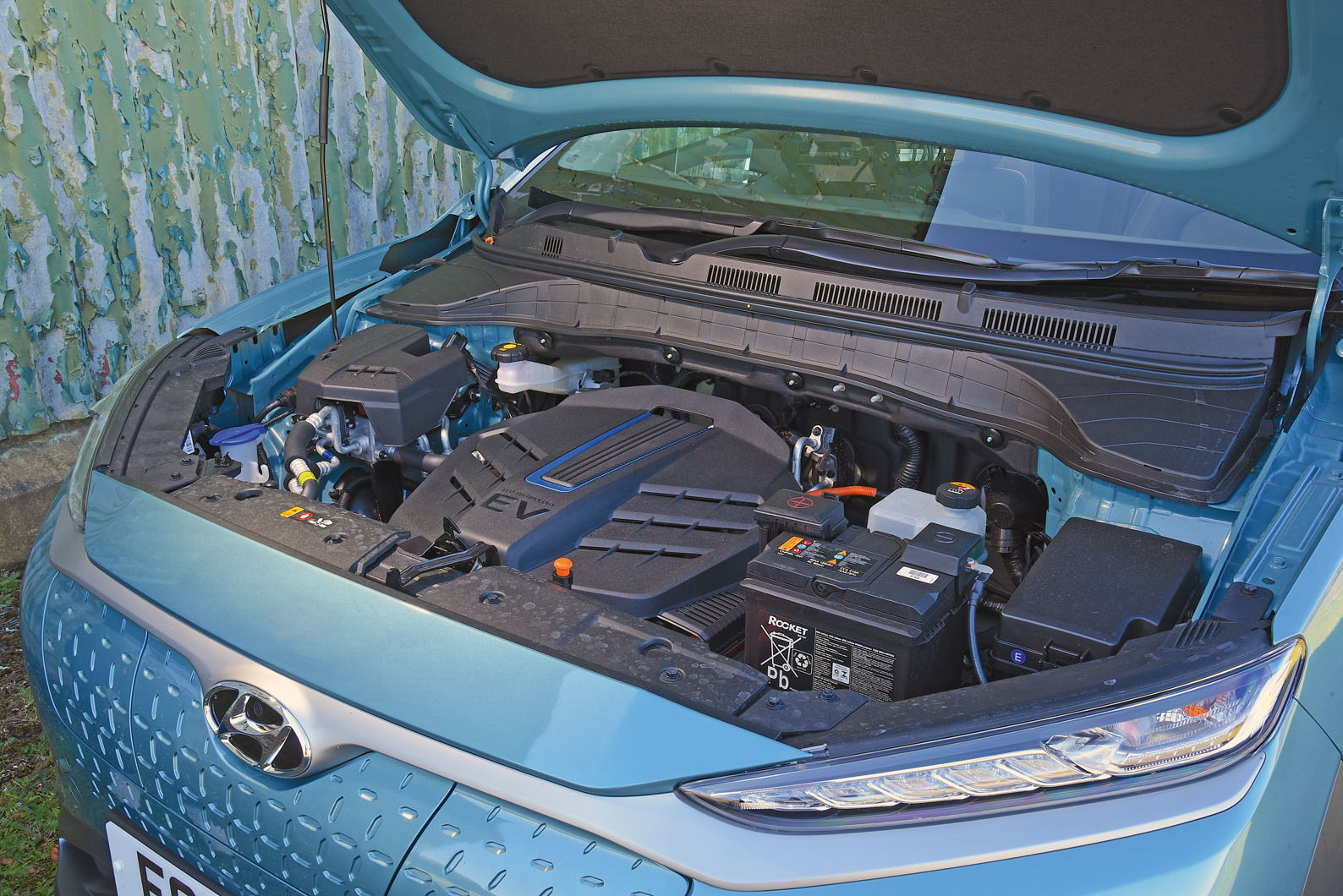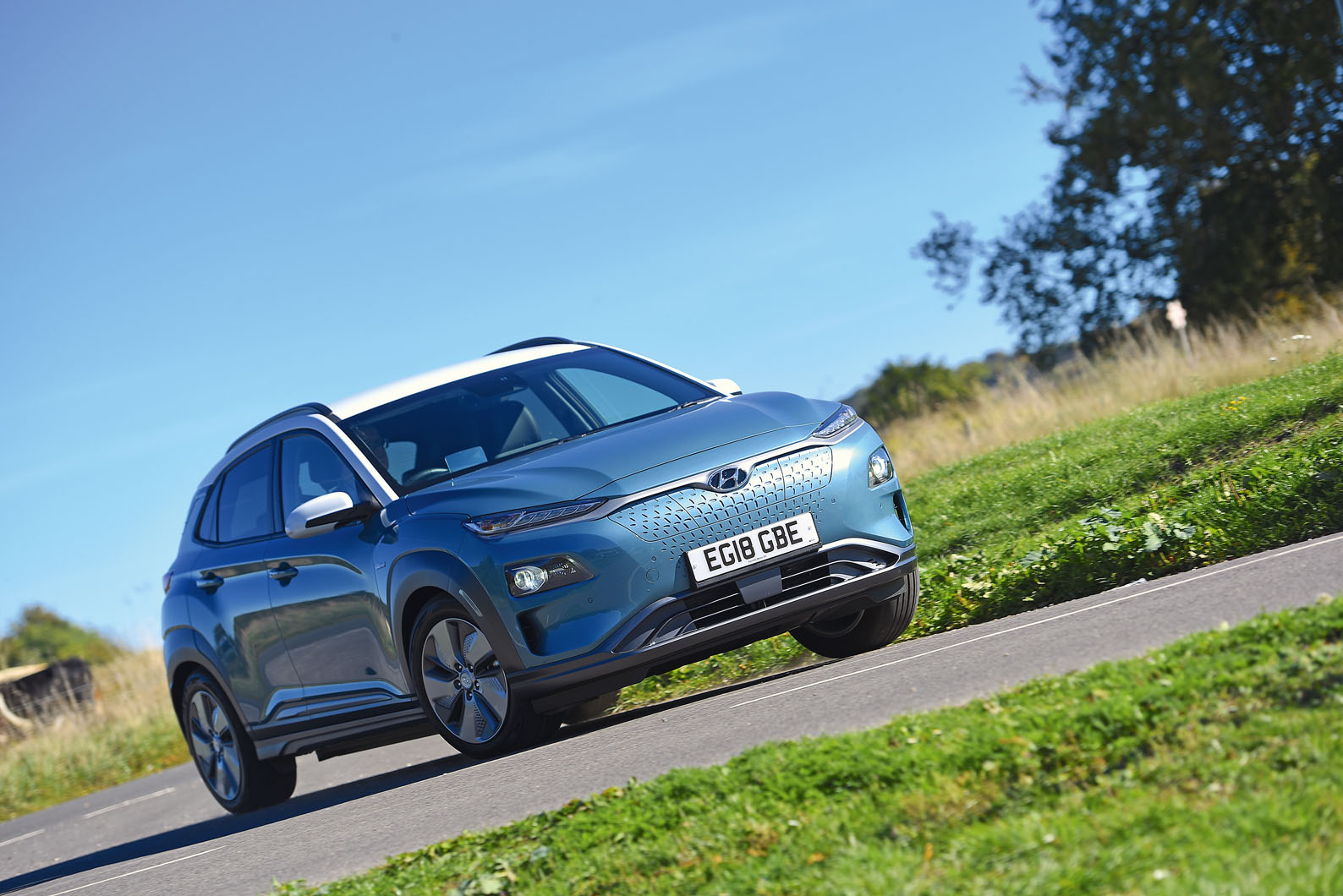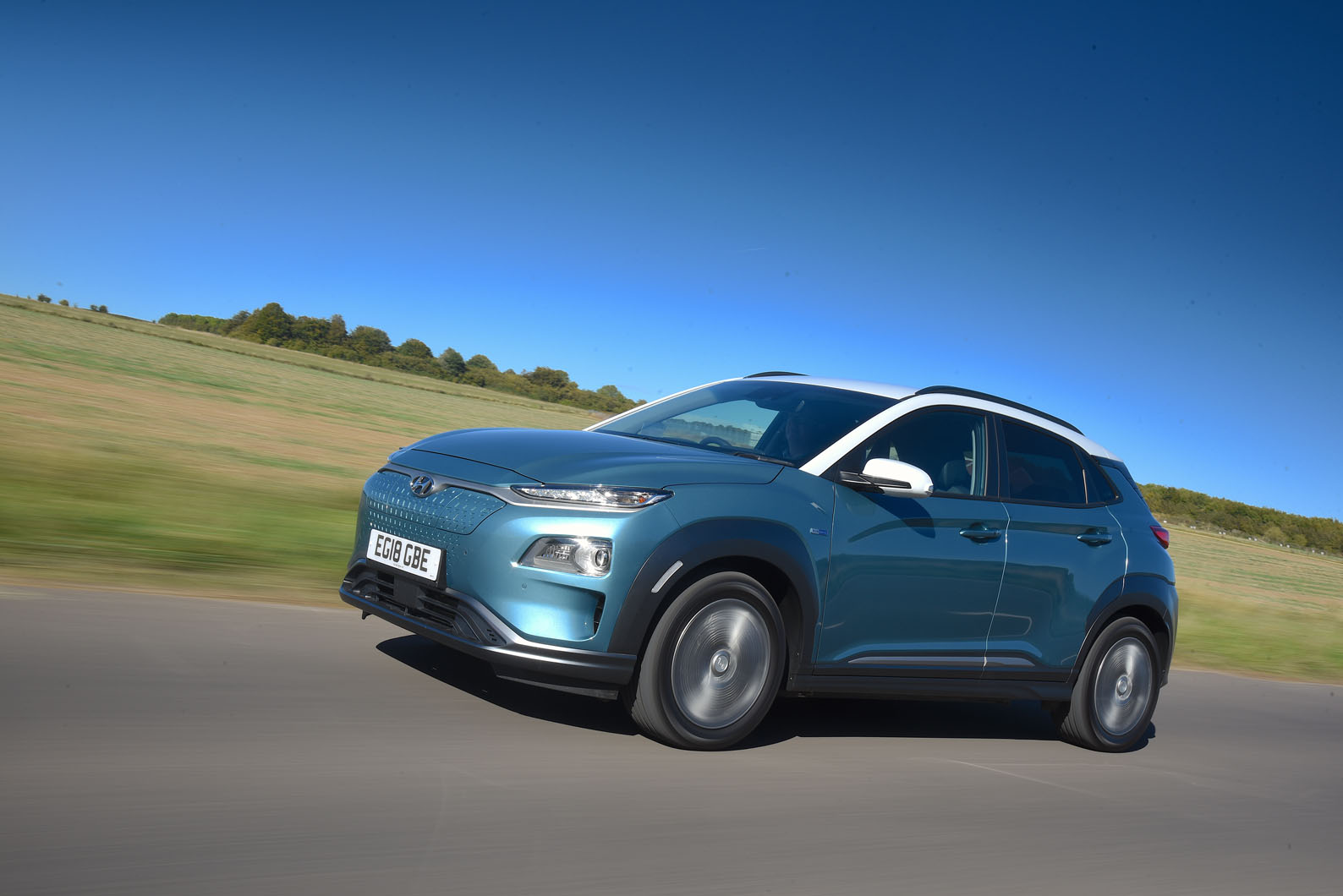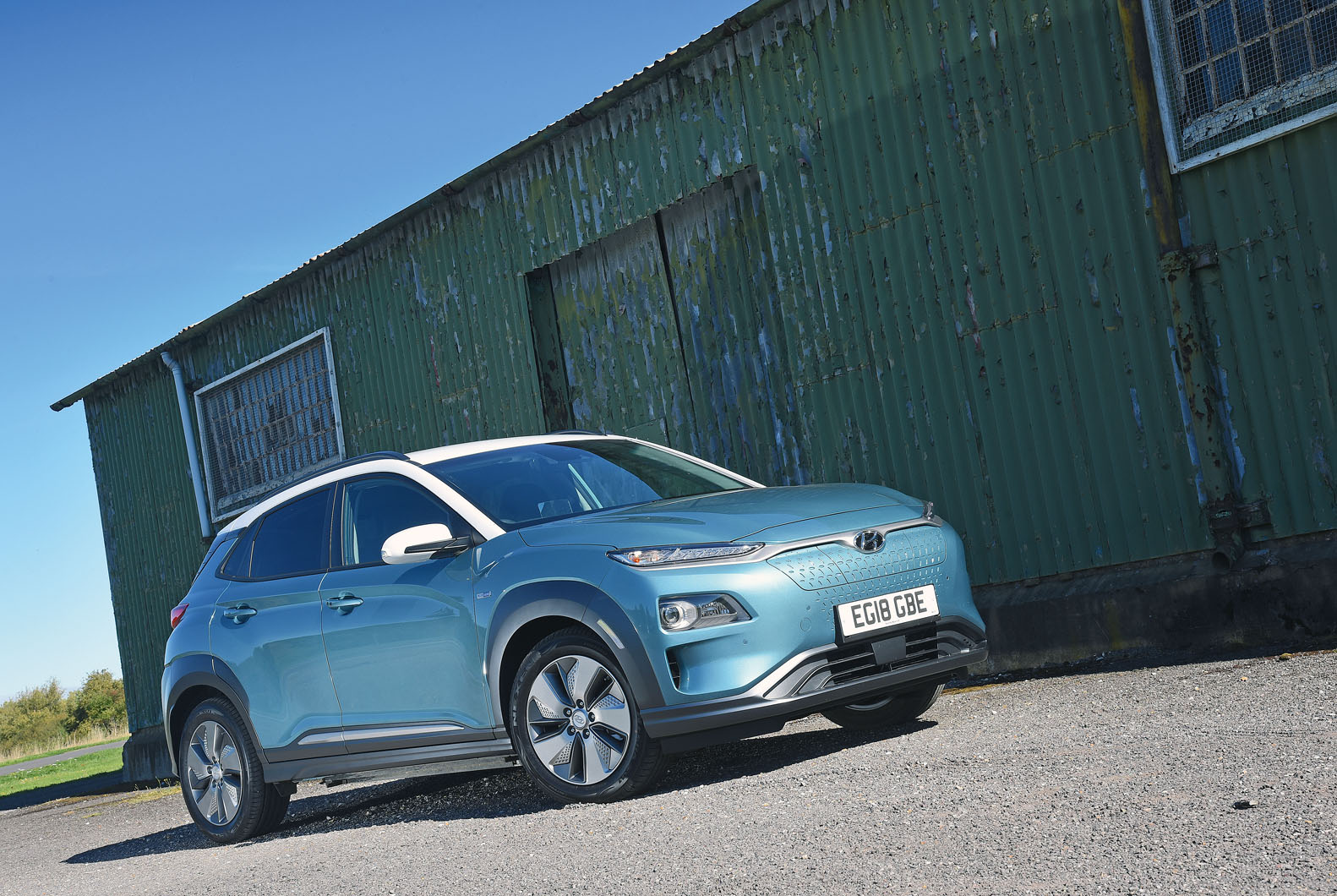For a car whose main draw might still prove to be its usability, there’s good news and bad to report about the Kona Electric’s cabin. The car is, as Hyundai claims, every bit as practical as a conventionally powered Hyundai Kona. More’s the pity, however, that the fact hasn’t made this a particularly spacious car.
By the fairly modest standards of small crossovers, the Kona Electric offers pretty average passenger accommodation: just about enough space for two larger adults to sit in the back seats, or three young children. It’s certainly more accommodating and convenient than a Renault Zoe, but wouldn’t beat a Nissan Leaf or Volkswagen VW e-Golf, at least to any meaningful extent. And up front, the tallest drivers might find themselves to be slightly limited in outright head and leg room.
At a smidge over 330 litres, the car’s boot is somewhere between that of a typical supermini and a full-sized family hatchback for carrying space. Unless you take out the underfloor polystyrene storage trays for the car’s tyre inflation pump and charging cables, the boot’s lower split-level floor setting isn’t usable.
There is a choice of black or blue/ grey dashboard colour themes. Our test car had a black fascia with black leather seats and, despite all that new silver and light grey trim on the transmission tunnel, its interior gave the impression of being quite plain, and a little dark and uninviting.
Perceived cabin quality isn’t up to the standard you expect in a car that tops £30,000, either, with a few too many hard mouldings and cheap plastic fittings in evidence. Hyundai’s 7.0in digital ‘supervision’ instrument cluster falls short of the configurability of others out there, but it’s clear and it gives you all the information you need to manage the car’s electric powertrain to best advantage.
To the driver’s left, meanwhile, the Kona Electric has its own centre console design with ‘by-wire’ button controls for the transmission and electronic handbrake, as well as some useful additional storage space that you won’t find in the regular Kona.
Go for the cheapest, 39kWh Kona Electric SE and you’ll get a 7.0in touchscreen intotainment system that, despite offering smartphone mirroring, doesn’t have a fitted navigation system. For some, without an easy way to locate and navigate to a nearby charging station, that probably wouldn’t be an EV in which to take on a long journey.
Our top-spec 64kWh Premium SE test car had Hyundai’s 8.0in system, as well as a nine-speaker Krell premium audio system, a DAB radio, a Qi wireless smartphone charging pad and a factory navigation system – all as standard.
The system is a bit unresponsive but still easy to use, with navigation mapping rendered with good detail and decent clarity. It’s a connected system that provides live traffic, weather and other information, but it relies on your phone’s data connection – and the detail it gives you on nearby charging stations could be better. The audio system sounds fairly strong, but we’ve heard plenty better for similar money.


